USPTO Guidance on AI-assisted Inventing: A Natural Person Is An Inventor If They Provided A Significant Contribution
February 22, 2024
By: Philip T. Mazoki
- A natural person may qualify as an inventor or joint inventor if that natural person made a “significant contribution” to an AI-assisted invention.
- If a single natural person uses an AI system to create an invention, that single person must make a significant contribution to every claim in the patent or patent application.
- A non-natural person is not an inventor or joint inventor on a patent application or patent
The United States Patent and Trademark Office (USPTO) recently published guidance on whether a natural person may be an inventor of an AI-assisted invention. This guidance from the USPTO stems from President Biden’s Executive Order No. 14110 titled “Executive Order on the Safe, Secure, and Trustworthy Development and Use of Artificial Intelligence,” mandating that the USPTO publish such guidance for patent examiners and applicants, and has evolved from years of actively engaging in seeking and listening to stakeholder comments on inventorship and the patentability of AI-assisted inventions.
To date, the seminal case addressing artificial intelligence and inventorship is Thaler v. Vidal, 43, F.4th 1207 (Fed. Cir. 2022) in which the Federal Circuit held that an inventor, including a joint inventor, under 35 U.S.C. § 100(f) and 35 U.S.C. § 100(g) must be a natural person. The Thaler decision makes clear that the statutory language of 35 U.S.C. § 100(f) (definition of inventor as natural person) and 35 U.S.C. § 115 (inventor executes oath or declaration) prohibits AI systems and other non-natural persons from being listed as inventors on patent applications and patents. The Federal Circuit in Thaler, however, explained that it was not confronted with “the question of whether inventions made by human beings with the assistance of AI are eligible for patent protection.” Id. at 1213. On April 24, 2023, the U.S. Supreme Court denied certiorari in Thaler v. Vidal.
The USPTO’s guidance addresses the question after Thaler - whether a natural person can be an inventor on an AI-assisted invention. The USPTO’s guidance explains that, for a natural person to be named as an inventor on an AI-assisted invention, the natural person must have made a “significant contribution” to the claimed invention and, in the instance of only a single natural person, that single natural person must have made a “significant contribution” to every claim in the patent or patent application. The guidance explains that a natural person using an AI system to create an invention does not render that claimed invention unpatentable due to improper inventorship because the AI system cannot be listed as a joint inventor.
The guidance states that determining whether a natural person’s contribution to an AI-assisted invention is significant “may be difficult to ascertain, and there is no bright-line test.” However, the guidance indicates existing caselaw regarding inventorship disputes may be instructive and, further, the guidance includes a list of principles to assist applicants and patent examiners in determining whether a natural person’s contribution to AI-assisted inventions is significant. For example, a natural person who only presents a problem to an AI system may not be an inventor of the output of the AI system, but a significant contribution could be shown if the person develops a prompt in view of a specific problem to result in a specific solution from the AI system. Further, a natural person who designs, builds, or trains an AI system to address a particular problem to result in a particular solution may be an inventor if those steps were a significant contribution to the invention created by the AI system. A natural person who merely recognizes and appreciates the output of an AI system as an invention is not necessarily an inventor, but a person who takes the output and makes a significant contribution to the output to create an invention may be an inventor. A natural person merely overseeing an AI system does not make a person an inventor of an invention created through the use of the AI system.
The USPTO’s guidance reminds applicants of their existing duty of disclosure and its applicability with regard to the inventorship determination. For example, parties with a duty of disclosure (37 C.F.R. §1.56(c)) have a duty to inform the patent office of evidence that demonstrates that a named inventor did not significantly contribute to an AI-assisted invention.
The USPTO will provide additional guidance to patent examiners and applicants to address other considerations of the impact of artificial intelligence on the patent system.
In the meantime, inventors using AI systems should clearly document their human contributions to the development of AI-assisted inventions. During the patenting process, attorneys should ensure that human contribution was involved in each claim and, if there are doubts regarding human contribution, alternative protection strategies should be considered, e.g., protecting an AI system itself rather than a result from the system and trade secret protection.





